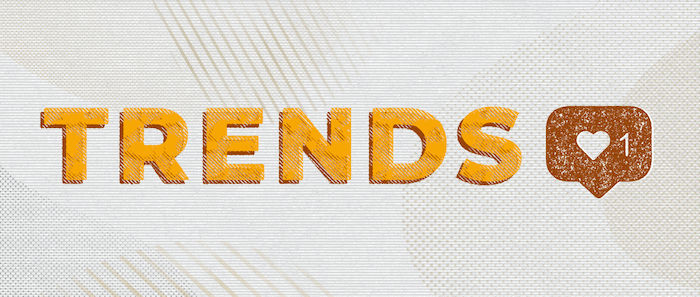Six Digital Channels Worth Testing in 2020
You know what they say about putting all of your eggs in one basket...don’t. Even two baskets can be risky, but when platforms like Google and Facebook have such massive audiences and streamlined operations, it can be easy to focus a lot of attention and marketing spend on these channels. To their credit, those powerhouse players have the data and learnings to deliver ads to your ideal audience and produce results that prove their value. For some advertisers working without an expansive budget, this combination can be ideal.
When budgets start to increase and other factors allow for more opportunities to test however, there is no shortage of digital ad platforms and networks that have the potential to be lucrative in achieving your metrics. Here are a few to consider:
TikTok
If this blog post were a Bingo board, TikTok would be the free space. Everyone’s talking about it, and 800 million people are using it. That’s a larger user base than both Twitter and Snapchat, and its growth is on the upswing.
The looming threat of a national ban of the app may make it seem risky to deploy resources to an uncertain platform, however TikTok remains committed to protecting user privacy in the U.S. and has stated that it has not nor would ever share user info with China. With that reassurance, TikTok has also just launched its self-serve platform, making it more welcoming than ever to advertisers with budgets starting at $50 a day.
TikTok’s rollout of ads to a wider range of advertisers is fairly robust with the option to build custom and lookalike audiences, and the ability to install a pixel for tracking and audience creation purposes. There is also a fair amount of flexibility in terms of creative, with TikTok even offering a tool to help advertisers automatically generate videos. With that in mind, the greatest success on TikTok is likely to be achieved by creating ads that mirror the style of creators on the platform – after all, the company promotes its ad product with the line: “Don’t Make Ads. Make TikToks.”
Similar to Instagram, Pinterest is built as a visual-first platform and it's basically made for shopping. The platform offers a variety of optimization selections in promoting pins – conversions, traffic, and brand awareness to name a few – and lets you target based on interests, keywords, demographics and other audiences.
Pinterest has some great stats to assist in making a case for the use of its ad products. The primary users are women ages 25-54, a group which incidentally makes 80% of the purchase decisions in U.S. households. Furthermore, users are actively searching for product information and saving items they want to purchase, making it an ideal platform to get new products in front of qualified users.
Messenger
Okay, technically this channel does fall under the Facebook umbrella, but not in the traditional paid advertising sense. In fact, advertisers utilizing Messenger generally don’t pay anything directly to the platform.
There are many ways to grow a Messenger list, and ways to utilize that list in a similar fashion to email, but with exponentially higher open rates. Facebook does have various safeguards in place to keep unwanted messages from becoming spam, but for your core audience, this is a great way to keep people engaged.
Image: Klaviyo
When it comes to ROI opportunities, using Messenger to send abandoned cart notifications is a top choice. Depending on your e-commerce back end, major development changes are not needed to enable this functionality, but rather third-party apps like Klaviyo can be installed for a seamless rollout. When users add an item to their cart, they can opt to receive updates via Messenger, giving advertisers the opportunity to ping them again if they don’t checkout, thus boosting sales.
Snapchat
Suggesting the use of Snapchat for advertising purposes comes with a pretty major caveat: your audience. Older demos (read: people who are out of college) aren’t spending a lot of time on the app, but if you’re trying to reach Gen Z, Snap has this market. Snapchat targeting is fairly robust, with options to target by interests, behaviors, location and demographics, just like you’d find on other platforms. Snap isn’t missing in terms of measurement either, with a dedicated pixel to track results across websites and apps.
What makes Snapchat particularly exciting is the way in which the company innovates. Snap has a wide array of ad formats and is constantly rolling out new features that have the potential to mean new opportunities for advertisers. For instance, Snap just announced Minis, a new place for developers to create apps within Snapchat. All of this, plus the 229 million daily active users make a pretty compelling case for Snap, assuming that’s where you audience spends their screen time.
Anchor (Podcast Advertising)
Image: Anchor
In 2018, a refreshed version of Anchor (a software originally launched in 2015) was released with the specific purpose of acting as a platform for people to create and publish podcasts. By publishing through Anchor, creators’ podcasts are automatically distributed to major listening services (Spotify, Apple Podcasts, etc.), and they’re also given an opportunity to easily find sponsors to partner with.
The catch with Anchor is that unlike many of these platforms, the advertiser process does not begin with a simple sign-up. Rather, you’ll need to get in touch with a rep who can get you involved with the service. Once that is complete though, the process of securing podcasts to advertise on is fairly robust. Ads are recorded by hosts but can then be inserted programmatically, allowing for greater budget flexibility and more targeted reach. Compared to alternative podcast advertising tactics, Anchor seems to have hit a sweet spot.
Reddit has 330 million active users, 26.4 million of which are based in the U.S. That global user base has surpassed Twitter, but that is hardly the most impressive stat. Reddit posts are often SEO friendly, appearing in search results, and as such, the site typically sees close to 1.6 billion visits each month, making it one of the most popular websites.
Reddit ads are targeted to specific topics and the relevant conversations people are already having about them. In addition to more mainstream conversion-driving tactics, promoted posts on Reddit are a great way to engage with consumers and get them talking. In a Welch's example, the brand was able to engage with users through a prompt on the platform, with 83% of participants saying the content was relevant to them – far higher than your typical Facebook quality ranking.
Like each of these solutions, Reddit may be a perfect new channel for some advertisers, where others may want to look elsewhere. The key though is to explore these channels now and find what works. Taking the learnings from a summer test could open up an entirely new revenue stream ahead of the holiday shopping season, or could prepare you for the next time something happens to one of the major players.





